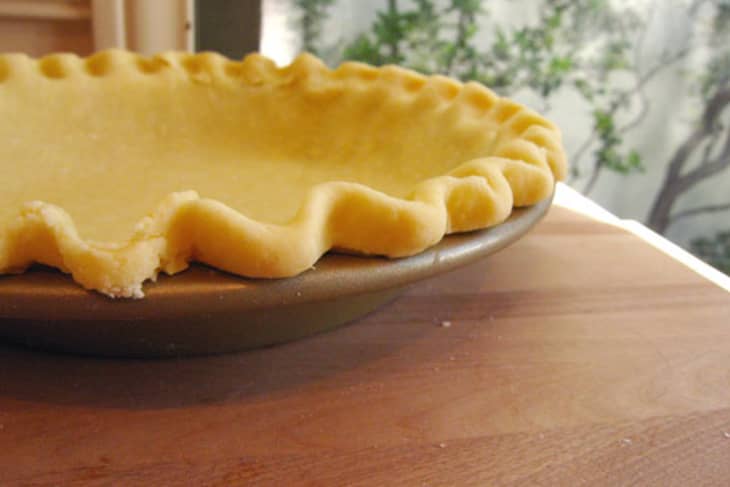No More Shrinkage: 4 Tips for Blind Baking Pie Crust
Blind baking a pie crust for a fruit tart or a quiche can be frustrating. If not done right, the dough shrinks up as it bakes, leaving an unattractive, too-small container for the filling. But what is the right way to do it? Freezing, crimping, casting voodoo magic? Here are the tricks that work for us every time:
1. All the normal rules for pie crust apply. By that we mean making sure your ingredients are cold, not cutting the fat into the flour too finely, letting the dough rest for at least an hour after it is made, and not handling the dough too much as it is rolled out.
2. Fold the edges of your dough under. The thicker your dough is around the lip of the pie plate, the less likely it is to shrink and pull down the sides. For maximum thickness, after fitting the dough into the plate, cut off the excess, leaving an overhang of about ¾ inch (2 cm). Fold this under, using the scraps to patch any thin areas, and crimp. This has the added benefit of making the edges of the pie look very smooth and neat.
3. Freeze the dough in its pie plate before baking. Frozen dough is less likely to shrink and slump. We typically freeze our dough overnight, but even an hour or two in the freezer will help.
4. Line the dough with a piece of parchment paper and fill with pie weights before baking. We’ve tried buttered foil in place of parchment, but sometimes have problems with it sticking. Parchment paper never sticks and the weights keep the crust from bubbling up as it bakes. (Dried beans or uncooked rice can also be used as pie weights.)
Do you have any tips or tricks for foolproof blind baking?
